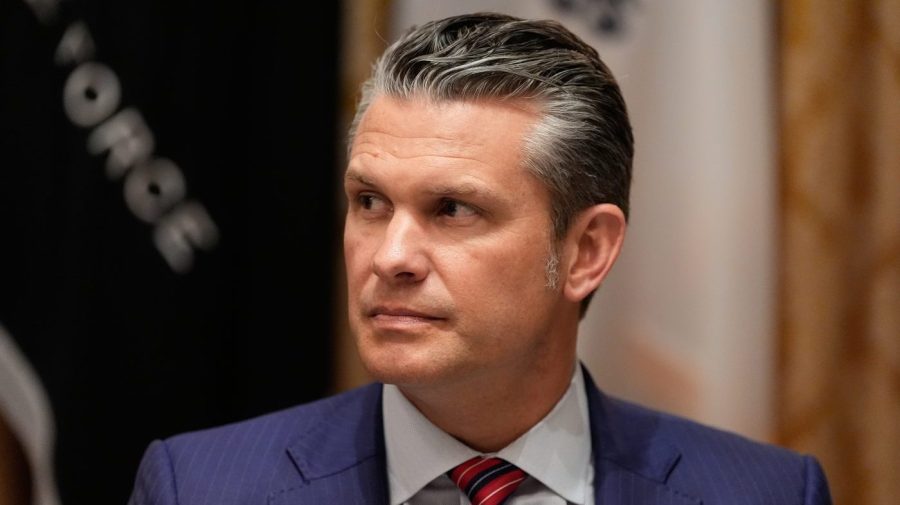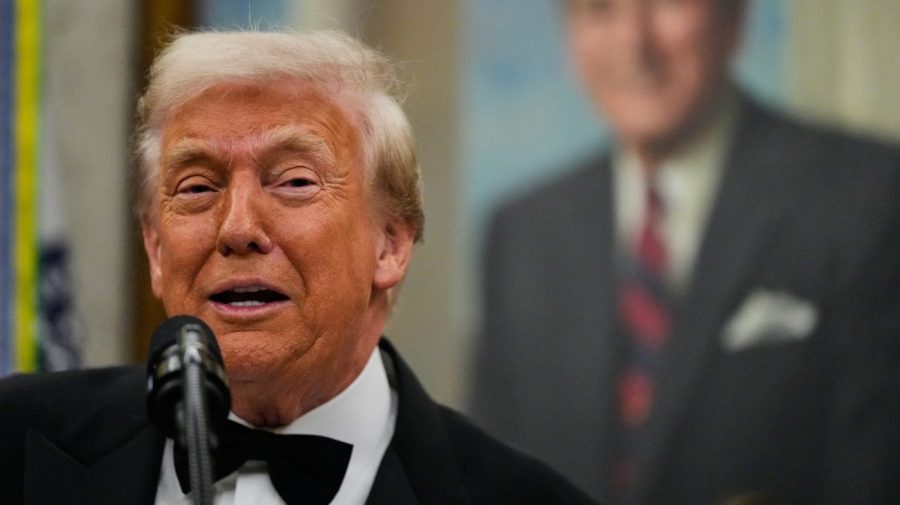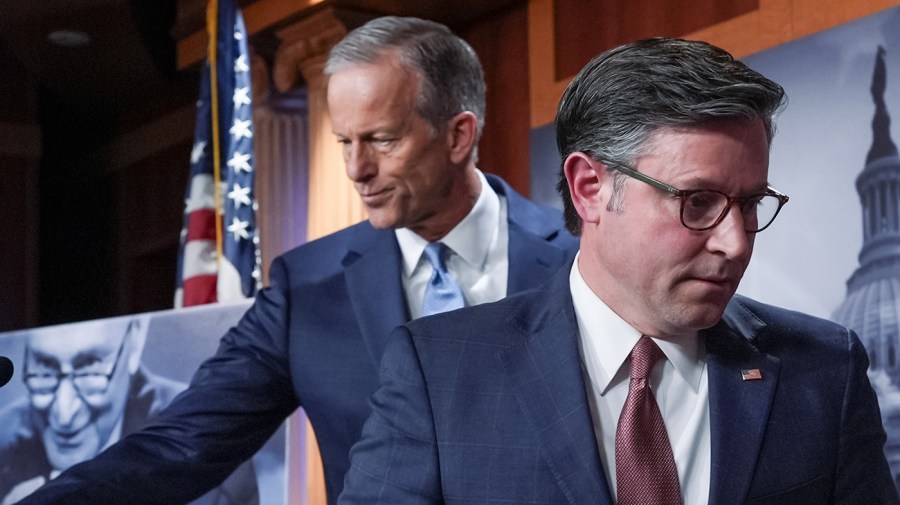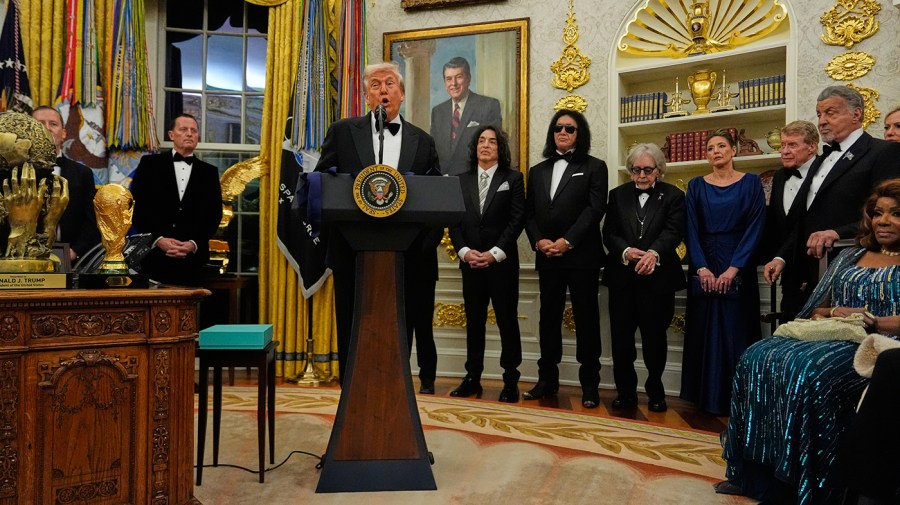
Starting Wednesday, all but one media outlet that regularly covers the Defense Department is set to lose access to the Pentagon.
Defense Secretary Pete Hegseth demanded that journalists agree to a new policy by 5 p.m. Tuesday under which they would have to pledge not to obtain or use any unauthorized material, even if the information is declassified — or surrender their press badges within the next 24 hours. Media outlets say it is a violation of their First Amendment rights, and almost every news outlet has refused to sign.
The rejections mean that for the first time since the Eisenhower administration, no major American television network or publication will have a permanent presence at the Pentagon.
Reporters and editors, who have urged defense officials to reconsider the policy, say they will continue covering the U.S. military with or without access to the building. But these rules add a new chapter to how journalists will cover the armed forces.
Here are the highlights:
All outlets except one are refusing to sign
Every major television network, wire, publication and radio outlet has gone on record saying that their journalists have refused to sign on to the policy, including ABC News, NBC News, CBS News, CNN, The Associated Press, Reuters, Bloomberg News, The New York Times, The Washington Post, The Wall Street Journal, The Guardian, The Atlantic, Including the Financial Times, Politico and NPR. The Hill and its sister network NewsNation have also declined to sign.
In a joint statement issued Tuesday afternoon, each major broadcast network said it would not sign on to the policy.
“Today, we join nearly every other news organization in refusing to agree to the Pentagon’s new requirements that will restrict journalists’ ability to keep the country and the world informed about critical national security issues,” the statement said. “This policy is without precedent and puts core journalism safety at risk.”
Several right-wing news organizations have opposed the policy, including Fox News, the Washington Times, and Newsmax, the latter of which has said it believes the requirements are “unnecessary and onerous.”
As of Tuesday evening, the only outlet to have agreed to the rule is One America News Network, a far-right news and political commentary television channel and website that often gives favorable coverage to the administration.
The provision on ‘security threat’ was the important point
Under the new rules, journalists are not prevented from investigating, reporting on, or publishing stories on the U.S. military using information deemed technically sensitive or unclassified, but they could be considered a vague “security or safety risk” if they ask for such information, even from Defense Department personnel, according to the rules.
The policy stipulates that when journalists obtain and publish unsolicited classified or sensitive information from government sources, they are “generally” protected in doing so by the First Amendment.
But “if you solicit or otherwise encourage the disclosure of such information [Defense Department] Personnel violate laws and policies relating to the disclosure of such information, such conduct may consider whether you pose a security or safety risk.
The Pentagon described the solicitation as a call for suggestions to encourage military personnel to share non-public information, as many journalists do through their publications or personal social media platforms.
This was the main sticking point for journalists, the Pentagon Press Association (PPA) said in a forceful statement last week. Hegseth and his department are trying to “suppress the free press” with the new policy, which he says “sends an unprecedented message of intimidation to everyone within the DOD, warning against any unapproved conversations with the press and even criminalizing speaking without explicit permission – which is clearly not the case.”
in oneThe op-ed was published on TuesdayNPR’s Pentagon reporter Tom Bowman said that signing the document would “make us stenographers who issue press releases, not watchdogs who hold government officials accountable.”
Access to the press was already severely limited
The new rules follow a steady stream of directives from Hegseth’s office, which has sought to severely curtail press access and accommodations at the Pentagon since the beginning of the year.
In late January his office removed four outlets from its DOD jurisdictions under a so-called rotation program, replacing them with media outlets including One America News Network and Breitbart News, whose journalists have given favorable coverage to the Trump administration.
When the Pentagon Press Association asked officials for an explanation as to why four outlets were specifically targeted, officials took away desks from four additional news outlets, including The Hill.
Journalists removed from their desks were still allowed to work in the building, although Hegseth’s office made this difficult by restricting reporters from accessing the Pentagon’s press briefing room – one of the few places in the building with wireless internet, which is used to file stories.
Then in May, Hegseth banned journalists from most of the Pentagon’s hallways without official escort, an extreme decision because journalists had been allowed access to much of the building without surveillance for decades. Secure or restricted locations have always been off limits to the press without official permission.
Under the new rules, the Pentagon also plans to move all news organizations from their dedicated workspaces, moving the press corps to an as-yet undisclosed location in the building, potentially making it harder for journalists to access military personnel.
Hegseth also has not briefed Pentagon reporters in nearly four months and Press Secretary Kingsley Wilson has not held a briefing in two months, while the U.S. military has carried out legally questionable military strikes in the Caribbean Sea, deployed troops to American cities and continued actions around the world.
Hegseth mocks the media
Hegseth, who has often displayed hostility toward the press, on Monday mocked media outlets that had said he would not sign on to the policy, posting goodbye emojis on social media in response to posts by The New York Times and The Atlantic, both of which issued statements criticizing the move.
Heresponded in the same mannerin a statement to The Washington Post, which said the policy undermines First Amendment protections by “imposing unnecessary constraints on collecting and publishing information.”
The Pentagon chief insisted Tuesday that press restrictions are “common sense things” designed to protect classified information and prevent journalists from accessing certain areas of the Pentagon — despite rules that already limit access to unclassified areas and materials.
“The policy says maybe the policy should look like the White House or any other military installation,” Hegseth said at the White House, before accusing journalists of trying to “break the law” by leaking information to military personnel.
Trump defends policy, making it unlikely to change
on President Trumpgave his support on TuesdayBehind the Pentagon’s policy, calling the press “very dishonest” and insisting on rules, was necessary because Hegseth “considers the press very disruptive in terms of world peace and perhaps the security of our nation.”
Trump supported Hegseth, who sat with him during his meeting with the Argentine president at the White House, by suggesting he could even move the White House press corps out of the building if he wanted.
“You’re lucky I’m president, because we could take them across the street very easily,” he said, also claiming that the Pentagon’s restrictions came because of legitimate national security concerns.
He said, “I think when it comes to war … it bothers me to see soldiers and even high-ranking generals hanging out with you guys.”












